Abdominal paracentesis is a surgical puncture of the peritoneal cavity for aspiration of ascites. It is a safe and effective diagnostic and therapeutic procedure used in a variety of abdominal problems including, ascites, acute abdomen and peritonitis. Ascites may be recognized on physical examination indicated by abdominal distention, shifting dullness, and occasionally a palpable fluid wave. This protocol covers the task of aspiration of ascites by a Nurse Practitioner (NP).
Learning Sequence Builds Confidence
The learner practices the procedure in the ‘guided mode’ (ghosted hints, narrative from tutor) as often as they like.
When the learner is confident that they can accurately demonstrate the procedure without error, the learner plays the level in the ‘expert mode’ (no hints or coaching narration) - which they can repeat as often as they wish.
Finally, when the learner is confident that they have mastered the procedure - they take a one-time ‘exam’ attempt which results in their grade for that procedure.
Features
Guided Mode - ghosted hints show step-by-step positions, learner can 'see through' the patient to verify placement.
Oculus Quest Hand Tracking - learner uses natural hand movements to interact (no need to memorize buttons & controls).
Oculus Quest Affordability & Ease of Use - next generation game development processes allow the untethered, mobile VR to present effective visual and interaction fidelity at 1/4 of the cost of desktop VR.
Physiology Engine - real-world patient & case data informs the simulation.
Feedback - Cloud-based enterprise incorporates real-time data acquisition that allows learner to track progress and mastery, and provides detailed insights for debrief with faculty.
Support - Enterprise incorporates Knowledge Base (with tutorial videos & FAQ) - combined with help desk support staff for learners and staff.
Objectives
Identify anatomic structures with ultrasound to avoid complications from paracentesis.
Visualize the largest pocket of fluid with ultrasound to increase procedure success.
Demonstrate informed consent for a paracentesis procedure.
Perform a diagnostic and therapeutic paracentesis procedure.
Demonstrate the use of ultrasound as it pertains to performing a paracentesis.
Incorporate feedback to improve paracentesis performance.
Interpret laboratory values to diagnose the etiology of ascites.
Diagnose and treat spontaneous bacterial peritonitis.
Paracentesis Checklist
- Wash hands and don personal protective equipment.
- Check platelet count and/or presence of coagulopathy. Consult with attending physician if platelet count is <50,000, or there is a known coagulopathy as to whether platelet transfusion or other intervention is needed prior to the procedure.
- Check patient history for hypersensitivity to the local anesthetic.
- Have the patient empty the bladder (insertion of a Foley catheter is not recommended but may be necessary in some patients).
- Examine clinically to confirm ascites.
- Position the patient supine at the edge of the bed (right side of the bed if you are right handed), with the trunk elevated 20-30 degrees with their head resting on a pillow.
- Select the paracentesis site in the midline or lower quadrant.
- Select an appropriate point on the abdominal wall in the right or left lower quadrant, lateral to the rectus sheath. If a suitable site cannot be found with palpation and percussion consider using ultrasound to mark a spot.
- Ultrasound area for insertion; define landmarks, aim for 1/3 to ½ of the way between the anterior superior iliac spine and the umbilicus avoiding vessels and scars.
- Arrange equipment on a sterile field on a bedside stand.
- Clean the site and surrounding area with 2% Chlorhexadine swabs.
- Apply a sterile drape across the abdomen, revealing the insertion site.
- Anesthetize the skin over the insertion site with 1% lidocaine using a 3 ml syringe and a 25 or 27 gauge needle.
- Change to a 22 gauge needle, then anesthetize down to and including the peritoneum.
- Attach a 18-20 gauge 1½ inch needle (angiocath) to a 20-60 ml syringe. (In markedly obese patients a 3½ inch 20 or 22 gauge spinal needle may be needed).
- With the catheter mounted to the syringe, puncture the anesthetized skin. Keeping the needle perpendicular to the abdominal wall, advance the needle slowly until fluid flows freely into the syringe. You will meet some resistance as you enter the fascia.
- While advancing the syringe, maintain constant, gentle suction.
- When you get return of fluid, leave the catheter in place, remove the needle, connect the suction line to the catheter, and open the valve. Sometimes it is necessary to reposition the catheter because of abutting bowel.
- Aspirate the ascites using the suction line and the evacuation container. For a therapeutic tap, do not remove more than 500 ml in ten minutes. One liter is the maximum that should be removed at one time; this volume permits the fluids and electrolytes to equilibrate.
- When enough fluid has been withdrawn, quickly withdraw the catheter. If leakage of ascitic fluid occurs, close the paracentesis with a mattress stitch.
- Cover the insertion site with a sterile pressure dressing.
- Observe patient for 30 minutes for signs/symptoms of hypotension, bleeding, or abdominal distress.
- Provide post-procedural analgesics as needed.
